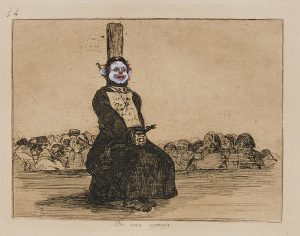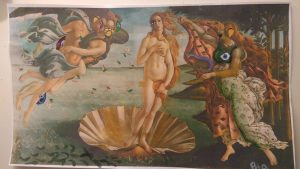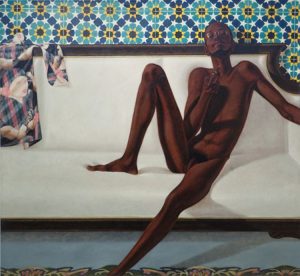Hello Kitty by Batya Cavens, mixed media on wood, 48 H x 48 W x 2.5 In
https://www.saatchiart.com/art/Painting-Hello-Kitty/314078/2867610/view
This piece is already rather large and loud, however if it were larger in scale, the likely effect is that it would have a bigger impact on the narrative or even heighten it. It would either be a larger portrait which puts a bigger emphasis on the face, it could be turned into a full body piece adding more to the seen figure or even a scene, or it could even be a public mural on a whole wall since it has very graffiti like features. If I myself made it larger, I would add more characters and features, maybe create a scene to expand and build up the narrative that already exists. The piece is very exiting already because of its playful style, so if it were a mural displayed publicly it would draw even more attention.
Adding more to the scale would just bring it much further and make the piece so much more powerful and fantastic. The possibilities of the different kinds of narratives one can add to this piece are endless and would be still very attractive to look at if it were smaller in size.





